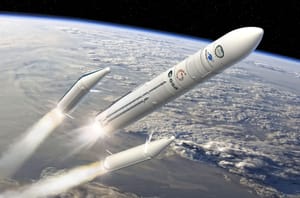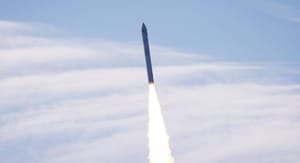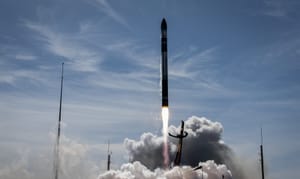
Jun 13, 2024
Ariane 6 begins preparing for first launch NET July 9th
Ariane 6 is finally less than a month away from its inaugural launch from Ensemble de Lancement Ariane 4 (Ariane Launch Complex 4) at the Guiana Space Centre, located in French Guiana in the north of South America. The launch date of no earlier than July 9th was announced by European Space Agency Director General Josef Aschbacher at the 2024 ILA Berlin Air Show on June 5th.
With the debut of Ariane 6 in July, the European Space Agency hopes to end its 'launcher crisis' and return independent European access to space. This crisis was caused by a mixture of issues such as delays to Ariane 6 development, the retirement of Ariane 5, the loss of Soyuz launch vehicles due to deteriorated relations with Russia, and the failure of Vega C in December of 2022. Chief Executive Officer of ArianeGroup, Martin Sion, was present at the announcement and said:
“The announcement of the scheduled date for Ariane 6’s first flight puts us on the home stretch of the launch campaign and we are fully engaged in completing the very last steps. – Ariane 6 is a powerful, versatile and scalable launcher that will ensure Europe’s autonomous access to space”
Ariane 6 may also fly a second time this year as Arianespace seeks to increase its cadence with Stéphane Israël saying:
“With 30 missions in our order book, Ariane 6 has already gained the trust of institutional and commercial customers. We are preparing to make Ariane 6’s second launch by the end of the year, followed by a steady rise to around ten launches a year once we reach cruising speed. It represents a splendid challenge for Arianespace and our partners”
Arianespace is confident in the first launch of Ariane 6 as seventeen customer payloads are onboard. The payloads of the first flight are: SpaceCase SC-X01 from ArianeGroup, Nyx Bikini from The Exploration Company, PariSat from GAREF, LIFI from OLEDCOMM, SIDLOC from Libre Space, YPSat from the European Space Agency, OOV-Cube from RapidCube, Curium One from Planetary Transportation Systems, RAMI from UARX Space, ExoPod NOVA from EXOLaunch, ISTSat from the University of Lisbon, 3Cat-4 from Universitat Politècnica de Catalunya, GRBBEta from Spacemanic, ROBUSTA-3 from CSUM, CURIE from NASA, and Replicator from RIDE!space and Orbital Matter. For more about each payload, further information can be found here.

What is Ariane 6?
Ariane 6 is ArianeGroup's latest launch vehicle in the Ariane family of rockets, ArianeGroup has been manufacturing and marketing the Ariane launch vehicles on behalf of the European Space Agency since Ariane 4. Two versions of the Ariane 6 rocket will be initially available for launches shortly after the debut, Ariane 62 and Ariane 64.
These two versions do share their first and second stages. The first-stage of Ariane 6 burns liquid hydrogen and liquid oxygen in one Vulcain 2.1 engine producing 139 tons of thrust. The second-stage of Ariane 6 also burns liquid hydrogen and liquid oxygen but in one Vinci engine producing 18 tons of thrust.
Each of the solid rocket boosters burn a mixture of aluminum and hydroxyl-terminated polybutadiene to produce 474 tons of thrust each. This allows Ariane 62 to generate 1088 tons of thrust at liftoff, while Ariane 64 can generate 2036 tons of thrust.

Ariane 62
Ariane 62 is the cheaper of the two configurations because it opts to use two solid rocket boosters. The lift capacity of Ariane 62 is as follows: 10,350 kilograms to low Earth orbit, 7,200 kilograms to a sun-synchronous orbit, 4,500 kilograms to geostationary transfer orbit, or 3,500 kilograms to a lunar transfer orbit.
On the launch pad, Ariane 62 weighs approximately 530,000 kilograms with a first-stage, second-stage, and faring diameter of 5.4 meters.
Ariane 64
Ariane 64 is the more capable of the two configurations due to it opting for four solid rocket boosters. The lift Capacity of Ariane 64 is as follows: 21,650 kilograms to low Earth orbit, 15,500 kilograms to a sun-synchronous orbit, 11,500 kilograms to geostationary transfer orbit, 8,600 kilograms to a lunar transfer orbit, or 5,000 kilograms to geostationary orbit.
On the launch pad, Ariane 62 weighs approximately 860,000 kilograms with a first-stage, second-stage, and faring diameter of 5.4 meters, exactly the same as Ariane 62.
Fairing Options
Ariane 6 offers two different fairing lengths, both being 5.4 meters in diameter, which are 14 or 20 meters. The 14-meter fairing is intended for a single main spacecraft with smaller rideshare payloads and European Galileo missions. The 20-meter fairing is intended for large single or heavy spacecraft, space science telescopes, constellations, or the dual launch of geostationary spacecraft.




